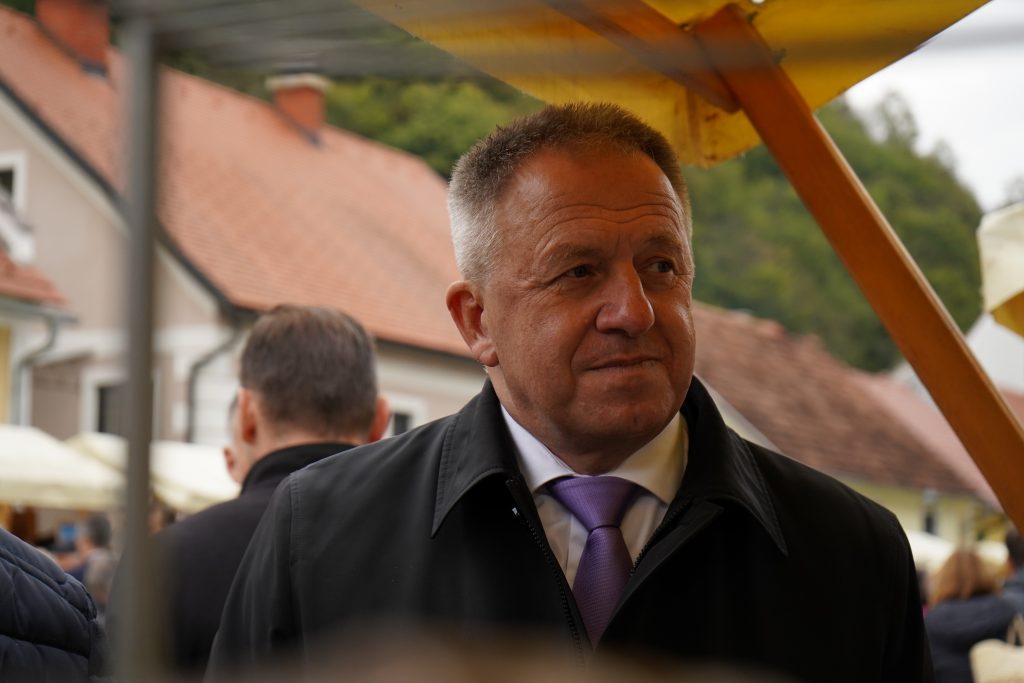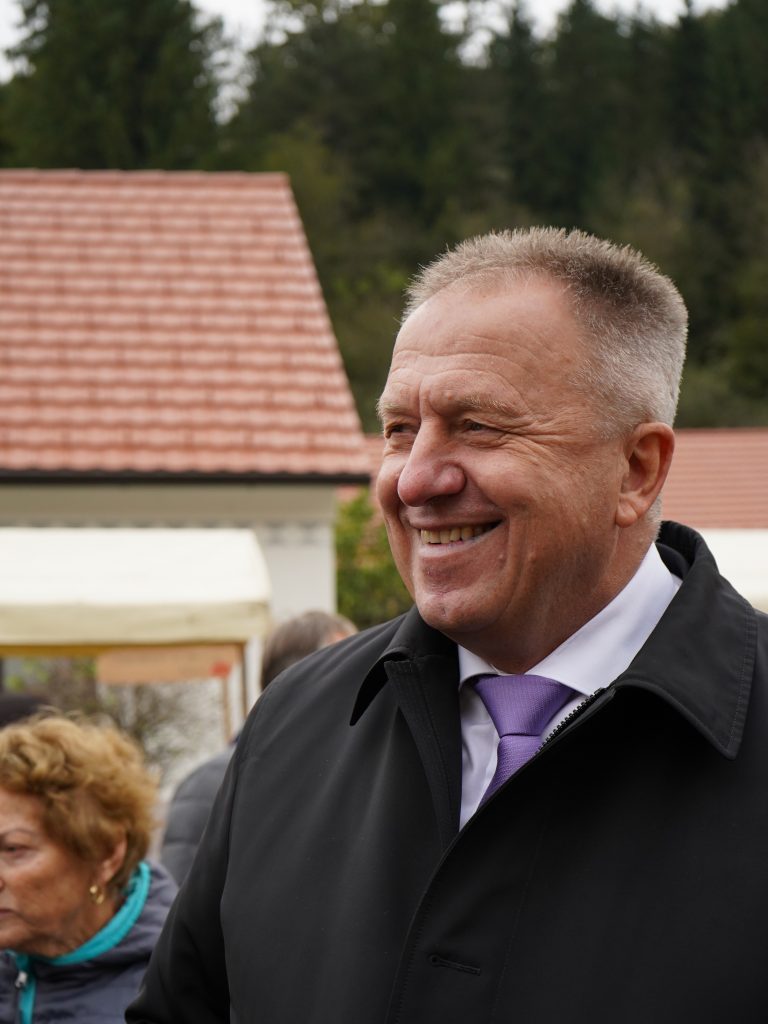Synergies are made between the investment promotion and facilitation, trade and investment policy and other relevant policies.
“I believe that our vision of Green.Creative.Smart.Slovenia paves the way for attracting investments in the future. The vision encompasses key future trends that are beneficial to every single investor. It is reflected in green energy, digitalisation, production facilities being self-sufficient energy-wise, and high added value brought by investments,” said Zdravko Počivalšek, Slovenian Minister of Economic Development and Technology.

What are the conclusions of the recent informal meeting of EU ministers, in charge of consumer protection, which took place in Kranj?
The ministers expressed their inclination towards two legislative proposals concerning consumer credit and product safety and concluded that those should be amended accordingly despite their correctly envisaged direction. The objective of the proposal for a consumer credit directive is to establish a well-functioning internal market for consumer credit by providing the best possible conditions for the free flow of such services while simultaneously ensuring the utmost consumer protection. The directive also focuses on the protection of vulnerable consumers by paying attention to their financial risks.
Technological progress changes consumer habits, sets new challenges, and exposes us to new risks, which is why the ministers agreed that consumer safety is an objective to be pursued by all companies in the supply chain. We further concluded that the current Package Travel Directive must be revised because the COVID-19 epidemic revealed that the Directive was not prepared for extraordinary circumstances.
The pandemic is slowly phasing out in the world and we will need the so-called sustainable recovery. What will be Slovenia’s approach in terms of expediting investments in priority sectors to achieve sustainable recovery?
Resilience and recovery mechanisms will stimulate identified development areas, and will, by utilizing reforms and investments, help to mitigate the negative economic and social impacts of the COVID-19 epidemic. Moreover, mechanisms will prepare the country for the challenges of green and digital transformation. Within the framework of the EU Recovery and Resilience Plan, 2.1 billion EUR grants are available for Slovenia.
Each component within an individual development area includes interrelated reforms and investments. In the light of green transition efforts, none of the measures should cause significant or substantial damage to the environment.
The key supported areas are green and digital transformation, smart, sustainable and inclusive growth, health care, and social security.

What should be the key priorities of European countries, including Slovenia, in terms of devising the national and international investment policy in the coming years?
The European common market is globally-speaking the largest economic area and is significantly interconnected. Slovenia is a part of the EU, and subsequently, the European market is crucial to our economy. The EU is sensitive to global market trends, whereas the EU and Slovenia are welcoming and promoting foreign and domestic investment.
If the EU faces cutbacks on either the supply or demand side or different shortcomings, that impacts Slovenia as well. Proactive government reforms and substantial recovery programmes can boost investment in sustainable growth.
Synergies are made between the investment promotion and facilitation, trade and investment policy and other relevant policies.
We work together based on an open, multilateral, transparent market and take collective actions to build economies that deliver inclusive economic growth, prosperity and safety for all.
How would you rate this year compared to 2020 when it comes to the recovery of the Slovenian economy?
I would rate it as positive. With appropriate measures in the amount of EUR 6 billion, of which 3 billion was paid out, the Government maintained the economic pulse. Measured by the GDP, our economy was brought to the pre-COVID level. The unemployment rate is even lower and Slovenia ranks among the top EU countries with the largest GDP growth. I have to state the outlook is optimistic. At this point, funds from five different European sources are available in a total sum of more than EU 10 billion and by all means, we can support all segments of our society. The Recovery and Resilience Plan envisages EUR 2.5 billion, of which grants represent EUR 1.8 billion.
Furthermore, we will renounce credit due to good credit ratings and current negative interest rates. Even more, those credit ratings are the best in Slovenia’s history, and the Government can rightfully claim some of the approbations. The business sector will receive EUR 427 million of grants. I am particularly pleased that large companies could be listed among grantees, and not only small and medium-sized ones, as has been the case so far.
What have been the biggest problems of Slovenian business people, especially small business owners and small companies?
The largest problem was certainly the liquidity of companies during the lockdown. Shutting down of the social life and part of the business sector was successfully tackled with the help of most popular measures of paid furlough and paid quarantine. I also consider it was a good thing for our economy that the industry sector was not fully closed down.
Nevertheless, the lockdown had a profound effect on the Slovenian economy, especially within the tourism and hospitality sectors. As a result, these two received the most support, i.e. EUR 1 billion. In 2020, tourism was saved by domestic guests for the most part, as the number of domestic tourist overnight stays increased by 33 per cent, while the number of foreign overnight stays dropped by 70 per cent. The latter was a huge blow for Slovenian tourism, as we are dependent on foreign guests. Domestic consumption was supported by tourist vouchers, which contributed greatly to Slovenia ranking among European countries with the largest increase in domestic guests. I am pleased with this fact, but even more so the ratio between domestic and foreign guests has been further improving this year.
The economic cooperation of Slovenia and Serbia is excellent. How can this cooperation improve and in which sectors?
The cooperation between Slovenia and Serbia is significant in various sectors. We foresee a strong potential in the field of environmental solutions. Serbia is planning major investments in municipal infrastructure development where Slovenia and its companies possess extensive knowledge and experience.
Furthermore, we could cooperate in the fields of water treatment facilities development, recycling, the circular economy, and many other projects. Slovenia has brought ecology to a very high level. The country is covered by forests and clean rivers due to proper maintenance and the ecological education of young people.
Although new water treatment plants are planned in Serbia – a total of about 300 new facilities –, we anticipate that Serbia does not yet have enough technical experts to operate those plants efficiently. Water purification is a complex process and plants must be managed by professionals who have completed proper training and obtained experience. Slovenian experts could help Serbia with the transfer of knowledge by establishing a centre for education and exchange of knowledge and experience in the field of ecology and water purification. Moreover, with the help of a EUR 1.5 million donation, Slovenia successfully set up the first modern complex for water purification in the tourist town of Zlatibor. This practice can serve as a good basis for further project cooperation.
Also, the field of energy offers good potential, especially the development of sustainable energy solutions. Serbia has significant potential for solar and wind power generation.
What can we learn from each other, i.e. what can Slovenes working in Serbia learn and vice versa, what can Serbs learn from Slovenes?
We never stop learning in life. Even though we used to be a part of a single country, Serbia nowadays represents a foreign market for Slovenia. Luckily the rule is every activity on the foreign market improves innovation and competitiveness. That goes for Slovenians in Serbia and the Serbs in Slovenia.
People involved in international business operate within different legal systems, different business cultures, and financing conditions. For any work to prosper, there needs to be hard work, focus, perseverance, and openness to dialogue and compromises. No matter where they come from, business people are very similar in that respect.
Challenges in 2022
What are your predictions for next year for Slovenia, regional countries and Europe? What will be the biggest challenges?
Public health remains the biggest challenge. Moreover, employment, financing of losses and debts, maintaining a certain level of demand, and ensuring the normal activity of supply chains also pose a challenge. Today, the energy crisis and inflationary shifts stem could complicate a lot of our efforts. Being involved in the economy, I believe and know that we could always find a solution to prosper in a certain period. Honestly, as politicians, we are faced with no other option. In Slovenia we’ve showcased we are excellent at survival and perseverance. As long as we work as a team, we will excel. That was an important lesson learned for building our common prosperity.